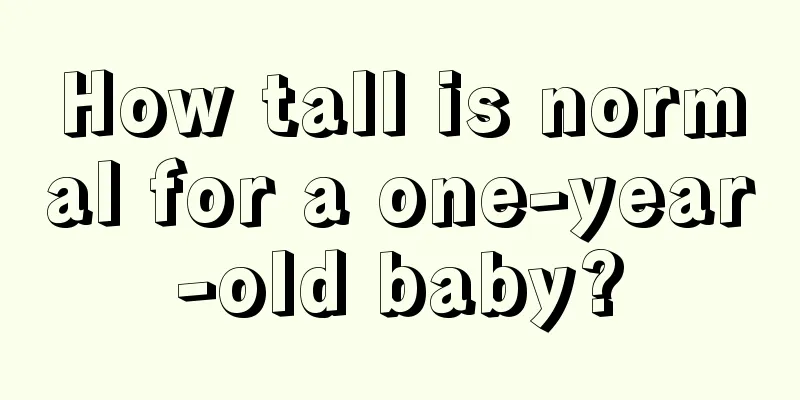What should I do if my child has hydrocele?

|
Pediatric hydrocele is a disease that occurs in young male children and generally has no obvious symptoms and does not cause pain. Usually newborn male babies will suffer from pediatric hydrocele, but it will disappear on its own before the age of two. If the baby still has this disease after the age of two, surgery is required. What should I do if my baby has hydrocele? 1. Treatment of symptoms Hydrocele in newborn babies usually disappears on its own before the age of two, so there is no need to rush for treatment. If it does not disappear after two years of age. Then perform puncture and fluid extraction. Most cases do not recur after aspiration. If the above options do not cure the disease, other treatment options may be considered. Miao medicine believes that kidney deficiency will lead to poor qi transformation and internal retention of water and dampness. When the spleen is weak and the liver is depressed, the meridians will be blocked, and water and dampness will flow down and gather in the anterior genitals. This disease will occur when the three organs are weak. Trauma and infection can easily cause blood stasis and blockage of collaterals, and water retention can also lead to this disease. 2. Relationship with infertility There is a small amount of serous fluid in the normal testicular sac, which is similar to the serous fluid in the abdominal cavity and has a lubricating effect, allowing the testicles to slide freely in it. If different types of hydrocele are formed and not treated in time, it will lead to long-term accumulation of fluid in the tunica, affecting male fertility. Specifically, the main effects of testicular hydrocele on male fertility are: long-term presence of anterior hydrocele increases internal pressure, causing testicular ischemia and poor testicular spermatogenesis, leading to infertility; hydrocele around the testicles compresses the testicles, affecting blood circulation and spermatogenesis; excessive hydrocele affects the couple's sex life; and it is not conducive to fertility for those secondary to diseases such as tuberculosis and orchitis. Hydrocele manifests as a cystic mass in the scrotum or spermatic cord. It is generally painless and can vary greatly in size, with most being oval in shape. Congenital hydrocele can be squeezed out when the patient lies flat, so that the fluid can gradually shrink or even disappear completely. Most hydroceles are unilateral. 1. Compression of testicles: The hydrocele around the testicles compresses the testicles, affecting blood circulation and then affecting spermatogenesis. 2. Soaking the testicles: When the testicles are immersed in the hydrocele for a long time, the pressure causes compensatory enlargement and thickening of the sperm. Affects normal development. 3. Wrapping around the penis: If the hydrocele is too large, the penis will be wrapped by the scrotal skin, which is not conducive to normal sexual life and will also affect fertility. 4. Complications: Those who are prone to secondary diseases such as tuberculosis and orchitis are not conducive to fertility. 3. Notes Hydrocele in children is a cystic mass in the scrotum. A small amount of fluid accumulation may not cause discomfort and is often discovered during physical examinations. When the amount of fluid accumulation is large, it can cause dull pain in the scrotum and a feeling of pulling on the spermatic cord; in the early fetus, the testicles are behind the peritoneum, and from July to September, they descend through the inguinal canal into the scrotum, and the peritoneum attached to the testicles also descends to form the peritoneal processus vaginalis. After birth, the processus vaginalis of the entire spermatic cord from the internal ring to the testis gradually atrophies and retracts. The processus vaginalis of the testis forms the sac-like tunica vaginalis proper of the testis. There is only a small amount of serous fluid in the normal tunica vaginalis cavity. When the secretion and absorption functions of the tunica vaginalis lose balance, hydrocele may occur. |
<<: How to perform cardiopulmonary resuscitation in children?
>>: What should I do if my child has a high fever?
Recommend
What to do if your child grows slowly
Many parents are concerned about whether their ch...
Symptoms of milk allergy
With the improvement of living standards and the ...
What should I do if my child vomits and refuses to eat? Moms can do this.
If a child vomits and refuses to eat, there must ...
How to deal with mites bites
Mites are everywhere in people's lives. Mites...
What to do if a child is bitten by a mosquito and becomes red and swollen
Young children have delicate skin and are most li...
How old can children drink acid enzyme soup
Children should try to drink sour plum soup as mu...
What should I do if my baby gets prickly heat?
The temperature is high in summer, and babies wil...
What to do if your child has blood in his stool
Don’t think that only adults can change their hea...
How many times a day should a full-month baby eat milk
A one-month-old baby's organs have developed ...
Why is my six-month-old baby coughing?
If your child at home has a cough, you must make ...
How to prevent colds for children
Children's immunity is relatively weak compar...
Symptoms of ceftriaxone allergy in children
It is common for children to catch colds. In many...
How should I supplement calcium if my baby is severely deficient in calcium?
Calcium is very important for infants and young c...
What supplements do children take?
In modern society, children are becoming more and...
What should I do if the beans planted by my baby become festering and burst?
Planting beans for babies is actually a common na...









